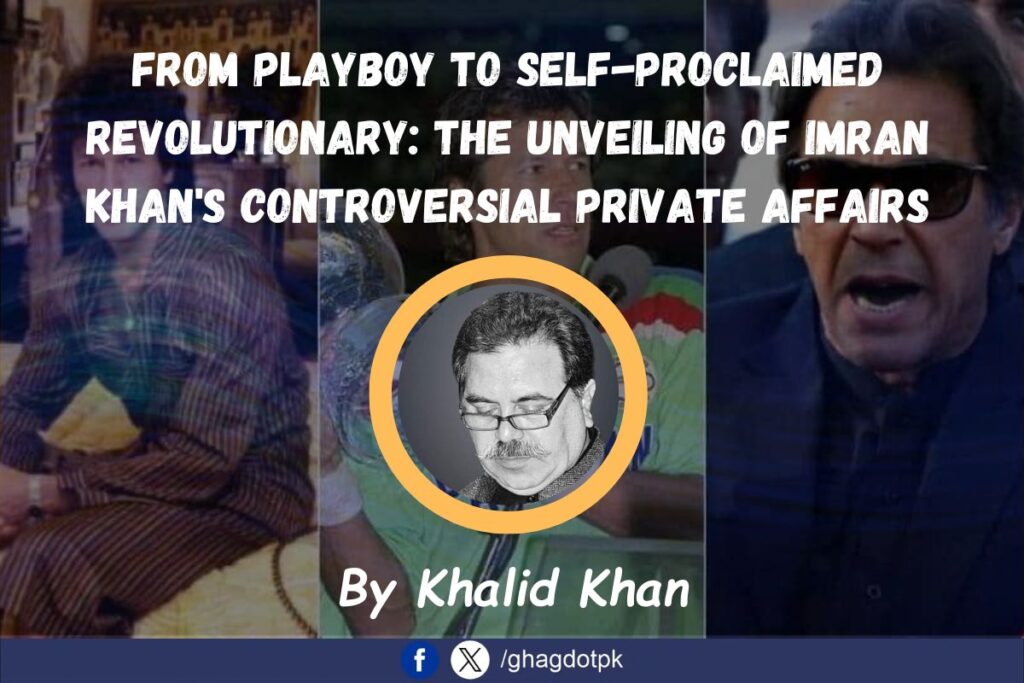By Khalid Khan
The release of the book From Parliament to the Red-Light Area has ignited a firestorm of controversy across social media, sparking intense debates about the private lives of Pakistan’s political elites. While the book initially gained attention for its claims about former Prime Minister Nawaz Sharif’s alleged romantic involvement with singer Tahira Syed—rumored to be linked to the awarding of a chairlift contract in Murree—it is the revelations about Imran Khan that have taken center stage, casting a long shadow over his carefully cultivated public persona.
Initially, supporters of Khan’s Pakistan Tehreek-e-Insaf (PTI) party circulated excerpts, emphasizing the book’s focus on Sharif. However, a deeper examination uncovers unsettling details about Khan’s personal life, shedding light on a series of allegations regarding his relationships with multiple women. The book presents a provocative image of a man whose private actions starkly contrast with the persona he projected as a politician and national hero.
On page 168, the book reveals a striking account from Anbasa, who affectionately referred to Khan as ‘Chachu.’ It states, “Every night, Khan would arrive at a friend’s estate with a different woman, indulging in hedonistic pleasures with Yusuf (Anbasa’s husband).” This shocking narrative is followed by a claim that what transpired in Khan’s private space was “unbearable.”
Page 169 goes further, detailing a claim: “I recognized Khan’s intentions from his gaze. He was a freeloader who believed indulging in others’ wealth was his entitlement. At home, he practically took control, bringing beautiful women every night and ordering his servants to prepare beds for them.”
The book’s revelations continue on pages 176 and 177, suggesting that even some of Khan’s PTI colleagues began calling him “Panch Minti,” a reference to his alleged inability to satisfy his romantic partners. It also details Khan’s rumored relationships with Bollywood actresses such as Zeenat Aman and Rekha, as well as his ties to Western women, including Sita White, Emma Sergeant, Lisa Campbell, and Jemima Goldsmith.
On page 178, the book recounts a significant episode in Sharjah, where several Indian actresses, including Aishwarya Rai, allegedly spent time with Khan. It claims that Khan even attempted to prevent Rai from participating in a beauty contest, although she reportedly ignored his directive.
The narrative extends to Pakistan’s film industry. On page 179, the book discusses Khan’s alleged relationships with Pakistani actresses Resham and Babra Sharif, with testimonies said to be well-known within the industry. Furthermore, it mentions Khan’s rumored involvement with an Argentine woman, Lucy, and the possibility of marriage with her.
Page 180 presents an important moment: “Imran Khan brought a blonde British woman to Pakistan, intending to marry her. He took her directly to Yusuf’s infamous estate, where they stayed.”
The book also explores Khan’s contradictory stance on marriage. Despite previously stating that he would only marry a Pakistani Muslim woman, Khan later abandoned this vow, raising questions about his true intentions and personal values.
On pages 181, 183, and 184, the book delves into Khan’s relationship with Sita White, who allegedly gave birth to Khan’s child. White’s statements offer insight into their time together, where she claims Khan led a double life—one as a conservative figure in Pakistan and another as a carefree man in London. White also reveals that Khan justified his actions by citing Islamic teachings that allowed men to have multiple relationships. On page 185, White recounts an interaction where Khan, upon learning she was pregnant, suggested that she terminate the pregnancy upon hearing it was a girl.
These unsettling accounts depict a man who allegedly used marriage as a pretext to manipulate women into sexual encounters, raising questions about his personal ethics and the disconnect between his private life and public persona. From Parliament to the Red-Light Area forces readers to reconsider the man behind the political image, questioning the complex interplay of fame, power, and human nature.






